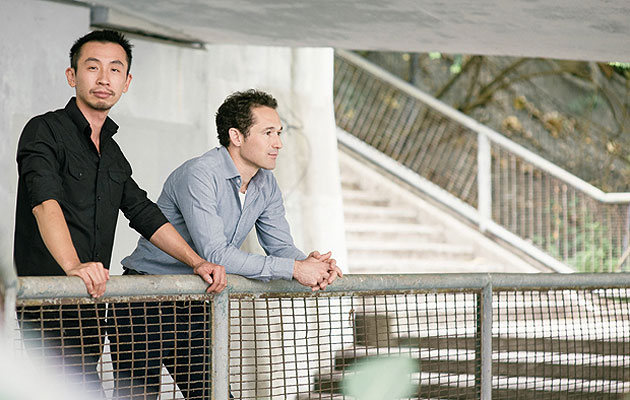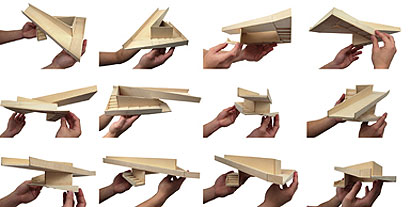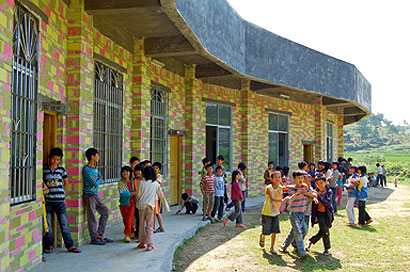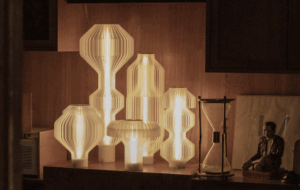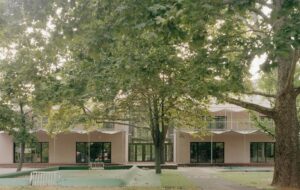|
John Lin and Joshua Bolchover of Rural Urban Framework |
||
|
Hong Kong-based Rural Urban Framework is working to tackle the unique problems that have emerged in China as a result of its rapid growth and authoritarian social policies – and creating models for the country’s future in the process It’s striking, in judging the Icon Awards, how many designers are striving to make the world a better place. There are devices for the injured, shelter in earthquake zones, clever infrastructure in underdeveloped regions. The degrees of conviction and plausibility vary, but Rural Urban Framework walk the walk more than most. In the seven years of its existence, it has created an impressive range of schools, bridges and other public buildings in rural China. Though “rural” in that country is a phenomenon not like any other in the world. Its success is partly because directors John Lin and Joshua Bolchover do not overstate their powers or ambitions. They are not trying to transform the local building industry, come up with miracle irrigation techniques or reinvent village politics. They are using their skills as architects, working with the available budget and techniques, to make useful buildings better than they would otherwise have been. In this respect, it’s not so different from designing a European art gallery or private villa, except there’s less money and possibly more benefit. An example is the Lingzidi bridge in Shangzhou. While the area was festooned with new roads, it had been overlooked that residents needed to cross a small river by foot to get at their walnut harvest. Rural Urban Framework was asked to design a bridge for this purpose. Its contribution, apart from realising it with a certain rough elegance, was to point out that the bridge might be a place for meeting and sitting and a means of getting close to the water, and to design steps and an additional descending arm for these reasons. Its dark concrete gives the bridge an identity distinct from the nearby highway viaducts.
In Qinmo, Guangdong Province, the Green Hope Foundation was encouraging the re-discovery of profitable organic agriculture, and the construction of a new school building enabled the old one to be used as a community centre and demonstration farm, with a mini- nursery and chicken pens. The firm is not setting itself up as an expert on agriculture, but it is making spaces that allow it to happen. Bolchover says they work with standard local construction processes, which means, for example, a lot of models rather than drawings, because builders there “have a different way of working with drawings”. The architects have to run with a certain imprecision and roughness. But they add ideas such as reusing old bricks, putting bricks on the roof to increase thermal mass and growing a green roof on masonry rubble. “We like to work with what’s there, and twist it slightly,” Bolchover says. They invented a mould for concrete blocks that allows voids to be oriented at different angles, so architects can modify the way light enters a building or vary a wall’s texture. They have worked with dye makers to add to the colour range of blocks. And they put silver tiles on walls to reflect children’s movements. The last was purely in the name of architectural enrichment – to make elevations into an “experience”,Bolchover says, rather than occasions for pointless ornament. The clients or users did not ask for it, but the architects feel it makes the school a better place.
Rural Urban Framework also does research. Lin and Bolchover have posts at the University of Hong Kong, which means they don’t have to charge for design work. Alongside their building projects, they study the patterns of development in China that come from speculative pressure and the country’s policy of labelling everyone from birth as being either rural or urban, with different rights and privileges for each. Urban citizens, for example, get free education, but rural citizens don’t. A result has been places that are built up to high density, but still classified as rural, with “irrational and unpredictable adjacencies: fish ponds next to factories, abandoned houses next to tower blocks, informal settlements next to formally planned commercial blocks, farmland next to golf courses”. Lin and Bolchover’s research informs their design and vice-versa – their schools and bridges are evidence of ways to work in such areas. They would now like to export their thinking elsewhere, and are working in Mongolia on the issue of migration to cities. At a time when “research” is airily claimed by architects wanting to sound significant, Rural Urban Framework is serious about it. |
Words Rowan Moore
Image Carmen Chan |
|
|
||

